Quantum Radar - The Future of Defense Detection Systems
In an era where technology evolves at breakneck speed, the military landscape is on the brink of a revolution with the introduction of quantum radar. This groundbreaking technology could redefine how we perceive detection and surveillance, transforming defense systems into highly sophisticated tools capable of identifying threats with unparalleled precision. Imagine a world where stealth aircraft and missiles are no longer hidden from detection, and military operations can be executed with a level of confidence that was previously unimaginable. Quantum radar is not just an upgrade; it's a game-changer that promises to enhance national security and operational effectiveness.
As we delve deeper into the mechanics and implications of quantum radar, we uncover a fascinating interplay between quantum mechanics and practical defense applications. This innovative technology leverages the principles of quantum entanglement and superposition, allowing for detection capabilities that far surpass those of traditional radar systems. The ability to detect low-observable targets, such as stealth aircraft, positions quantum radar as a vital asset in modern warfare. The implications are vast, offering military forces a significant edge in identifying and neutralizing threats before they can cause harm.
However, while the potential of quantum radar is immense, it is essential to approach its implementation with caution. The technology faces several challenges, including high development costs and the need for specialized training. These hurdles may slow down its adoption in defense systems, but the ongoing research and development in this field promise to pave the way for future breakthroughs. As we explore the advantages and challenges associated with quantum radar, it becomes evident that this technology is not merely a theoretical concept but a tangible reality that could reshape the future of defense.
- What is quantum radar? Quantum radar is a detection system that uses principles of quantum mechanics to improve sensitivity and accuracy in identifying targets.
- How does quantum radar work? It employs quantum entanglement and superposition to detect objects with minimal interference.
- What are the advantages of quantum radar over traditional radar? Quantum radar offers greater range, improved resolution, and the ability to detect low-observable targets.
- What challenges does quantum radar face? Key challenges include technological limitations, high costs, and the need for specialized training.
- What are the potential applications of quantum radar in defense? Potential applications include stealth detection and enhancing missile defense systems.

What is Quantum Radar?
Quantum radar is a groundbreaking technology that leverages the principles of quantum mechanics to dramatically enhance detection capabilities. Unlike traditional radar systems, which rely on electromagnetic waves, quantum radar utilizes the unique properties of quantum particles to achieve superior sensitivity and accuracy. This innovative approach makes it a potential game-changer in the realm of defense technology.
Imagine trying to spot a whisper in a crowded room; that’s what traditional radar systems often face when detecting stealthy objects. Quantum radar, however, is like having a super-sensitive microphone that can pick up even the faintest sounds, allowing it to identify and track targets that would typically evade detection. By harnessing quantum phenomena such as entanglement and superposition, this technology opens new frontiers in surveillance and situational awareness.
At its core, quantum radar operates on the premise that the quantum state of particles can be manipulated and measured in ways that classical physics cannot explain. This means that quantum radar can potentially detect objects at much greater distances and with improved resolution compared to its conventional counterparts. The implications for defense and security are profound, as it could lead to a significant enhancement in our ability to monitor and respond to threats.
Furthermore, quantum radar systems can be designed to minimize interference from background noise, making them exceptionally reliable in challenging environments. This capability is particularly valuable in military operations, where the ability to distinguish between friendly and hostile targets can be a matter of life and death. As nations around the globe invest in developing and deploying quantum radar technology, the landscape of modern warfare and defense strategies is poised for a major transformation.
In summary, quantum radar represents a fusion of cutting-edge physics and practical application, with the potential to revolutionize how we detect and respond to threats. As research continues and technology advances, the full scope of its benefits and applications will likely unfold, paving the way for a new era in defense detection systems.
- What makes quantum radar different from traditional radar?
Quantum radar uses quantum mechanics principles, allowing it to detect objects with greater sensitivity and accuracy, especially in challenging environments. - Can quantum radar detect stealth technology?
Yes, one of the significant advantages of quantum radar is its ability to identify and track stealthy objects that traditional radar might miss. - What are the main challenges in implementing quantum radar?
Challenges include technological limitations, high development costs, and the need for specialized training to operate these advanced systems.

How Quantum Radar Works
Understanding how quantum radar operates is essential to grasp its revolutionary potential. At its heart, quantum radar leverages the principles of quantum mechanics, specifically quantum entanglement and superposition. These concepts allow quantum radar systems to detect objects with an astonishing level of sensitivity and accuracy, far exceeding that of traditional radar systems. Imagine trying to find a needle in a haystack, but instead of searching blindly, you have a magical tool that can pinpoint the needle's exact location effortlessly; that’s the power quantum radar brings to the table.
To break it down further, let’s explore the two key principles:
Quantum radar operates on the foundation of several fundamental principles of quantum mechanics. These principles include:
- Entanglement: A phenomenon where two particles become interconnected, meaning the state of one particle instantly influences the state of another, regardless of the distance between them.
- Wave-Particle Duality: This principle states that every particle or quantum entity may be described as either a particle or a wave, depending on the experiment conducted.
These principles enable quantum radar to surpass classical limitations, allowing it to detect objects that would typically evade conventional detection methods.
When it comes to radar systems, entanglement plays a crucial role. By utilizing entangled particles, quantum radar can correlate information between them, enhancing its ability to detect stealthy objects that traditional radar might miss. Think of it as having a pair of super-sleuth sidekicks who can communicate telepathically, allowing them to cover more ground and share critical information instantly. This capability significantly improves situational awareness in defense scenarios, providing military forces with real-time insights into their environment.
The principle of superposition is another game-changer. It allows quantum radar to analyze multiple states simultaneously, drastically increasing the probability of detecting targets while simultaneously reducing false alarms. Imagine a security guard who can watch every camera feed in a mall at once instead of flipping through them one by one; this efficiency is vital for military operations where every second counts. The ability to accurately identify threats without being overwhelmed by irrelevant data is crucial for making quick, informed decisions in high-stakes situations.
In summary, the mechanics behind quantum radar make it a formidable tool in defense technology. By harnessing the power of quantum entanglement and superposition, it can detect objects with a precision that traditional systems simply cannot match. As research continues to advance in this field, we can expect to see quantum radar becoming an integral part of modern defense strategies.
- What is quantum radar? Quantum radar is a detection system that uses the principles of quantum mechanics to improve sensitivity and accuracy over traditional radar systems.
- How does quantum entanglement enhance radar detection? Quantum entanglement allows radar systems to correlate information between particles, improving the detection of stealthy objects that conventional radar may miss.
- What role does superposition play in quantum radar? Superposition enables quantum radar to analyze multiple states at once, increasing the chances of target detection while reducing false alarms.
- What are the potential applications of quantum radar in defense? Quantum radar can be used for stealth detection, missile defense systems, and enhancing overall situational awareness in military operations.

Principles of Quantum Mechanics
This article explores the innovative technology of quantum radar, its benefits, challenges, and potential applications in modern defense systems, highlighting how it could revolutionize detection and surveillance.
Quantum radar utilizes the principles of quantum mechanics to enhance detection capabilities, offering improved sensitivity and accuracy compared to traditional radar systems, making it a game-changer in defense technology.
Understanding the mechanics behind quantum radar is crucial. It employs quantum entanglement and superposition to detect objects with minimal interference, allowing for unprecedented performance in challenging environments.
At its core, quantum radar relies on fundamental principles of quantum mechanics, such as entanglement and wave-particle duality, which enable it to surpass classical limitations in detection technology. These principles are not just theoretical; they form the backbone of how quantum radar operates in real-world scenarios.
Entanglement is a phenomenon where pairs or groups of particles become interconnected in such a way that the state of one particle instantly influences the state of another, regardless of the distance separating them. This unique characteristic allows quantum radar systems to correlate data from multiple sources, providing a richer, more detailed picture of the environment. Imagine being able to see the entire battlefield through a single glance, thanks to the interconnectedness of particles!
On the other hand, superposition refers to a particle's ability to exist in multiple states at once until measured. This principle allows quantum radar to analyze numerous possibilities simultaneously, drastically increasing the chances of detecting a target. It’s like flipping a coin that can land on heads and tails at the same time until you actually check it. This capability drastically reduces false alarms, which is crucial for military operations where every second counts.
In summary, the principles of quantum mechanics empower quantum radar to operate with a level of precision and efficiency that traditional systems simply cannot match. The interplay between entanglement and superposition creates a robust framework for detecting objects that would otherwise remain hidden, enhancing situational awareness in defense scenarios.
Entanglement allows quantum radar to correlate information between particles, enhancing its ability to detect stealthy objects that traditional radar might miss, thus improving situational awareness in defense scenarios.
Superposition enables quantum radar to analyze multiple states simultaneously, drastically increasing the probability of detecting targets and reducing false alarms, which is crucial for military operations.
Quantum radar offers several advantages, including greater range, improved resolution, and the ability to detect low-observable targets, positioning it as a superior alternative to conventional radar systems.
Despite its potential, quantum radar faces significant challenges, including technological limitations, high costs, and the need for specialized training, which may hinder widespread adoption in defense applications.
Current technological constraints in producing and maintaining quantum systems pose hurdles for the practical implementation of quantum radar, necessitating further research and development to overcome these obstacles.
The high costs associated with developing and deploying quantum radar systems can be a barrier to entry for many defense organizations, requiring careful consideration of budget allocations and resource management.
Quantum radar's unique capabilities open up various applications in defense, from tracking stealth aircraft to monitoring missile launches, significantly enhancing national security measures and operational effectiveness.
One of the most promising applications of quantum radar is its ability to detect stealth technology, providing military forces with a crucial advantage in identifying and tracking enemy assets.
In missile defense, quantum radar can improve early warning systems by accurately detecting incoming threats, allowing for faster response times and more effective interception strategies.
- What is quantum radar? Quantum radar is a detection system that utilizes principles of quantum mechanics, such as entanglement and superposition, to enhance sensitivity and accuracy in detecting objects.
- How does quantum radar differ from traditional radar? Quantum radar offers improved range, resolution, and the ability to detect stealthy objects, making it superior to conventional radar systems.
- What are the challenges of implementing quantum radar? Key challenges include technological limitations, high costs, and the need for specialized training to operate these advanced systems.
- What are the potential applications of quantum radar? Quantum radar can be used in various defense applications, including stealth detection and missile defense systems, significantly enhancing national security.
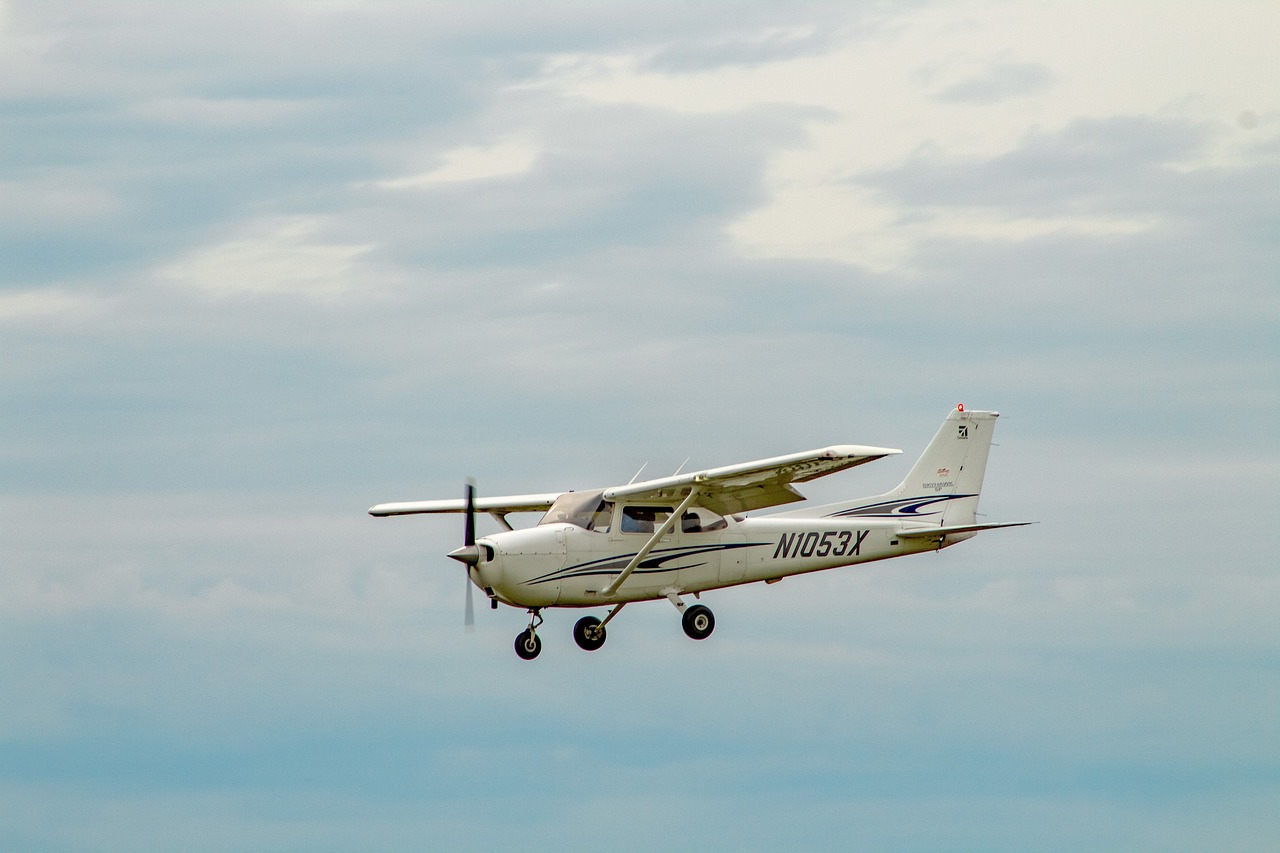
Entanglement in Radar Systems
Entanglement is a fascinating phenomenon in quantum mechanics that has profound implications for radar systems. At its essence, entanglement occurs when pairs or groups of particles become interconnected in such a way that the state of one particle instantaneously affects the state of another, regardless of the distance separating them. This unique property can be harnessed in radar technology to significantly enhance detection capabilities. Imagine a world where radar systems can not only detect objects but also infer their characteristics based on the behavior of entangled particles. This is precisely what quantum radar aims to achieve.
In traditional radar systems, the detection of objects relies heavily on the reflection of electromagnetic waves. However, stealth technology has evolved to minimize this reflection, making it increasingly difficult for conventional radar to detect certain aircraft or missiles. Here, entanglement comes into play. By utilizing entangled particles, quantum radar can achieve a level of sensitivity that allows it to detect these stealthy objects that would otherwise remain hidden. This capability is crucial for modern defense scenarios where situational awareness is paramount.
Moreover, the correlation between entangled particles means that quantum radar can gather data from multiple sources simultaneously, enhancing its ability to create a comprehensive picture of the operational environment. For instance, if one particle in an entangled pair interacts with an object, the other particle can provide information about that interaction, allowing for a more refined analysis of potential threats. This leads to improved decision-making and operational effectiveness in defense strategies.
To illustrate the potential of entanglement in radar systems, consider the following table that summarizes the key benefits:
| Benefit | Description |
|---|---|
| Enhanced Sensitivity | Ability to detect low-observable targets that traditional radar might miss. |
| Increased Accuracy | Improved correlation of data from entangled particles enhances target identification. |
| Real-time Data Processing | Simultaneous analysis of multiple states allows for quicker decision-making. |
In conclusion, entanglement in radar systems is not just a theoretical concept; it represents a transformative shift in how we approach detection and surveillance in defense. By leveraging the principles of quantum mechanics, entangled particles provide a powerful tool for military applications, ensuring that we stay ahead in an ever-evolving landscape of threats.
- What is quantum entanglement? Quantum entanglement is a phenomenon where particles become interconnected, allowing the state of one particle to instantly affect another, no matter the distance.
- How does entanglement improve radar detection? Entanglement enhances radar detection by allowing the system to detect low-observable targets and gather data from multiple sources simultaneously, improving accuracy and sensitivity.
- Are there challenges in implementing quantum radar systems? Yes, challenges include technological limitations, high costs, and the need for specialized training for personnel operating these advanced systems.
- What are the potential applications of quantum radar in defense? Quantum radar can be used for stealth detection, missile defense systems, and improving situational awareness in military operations.

Superposition and Detection
Imagine a world where a single radar system can simultaneously analyze multiple possibilities, drastically improving the chances of detecting targets while minimizing false alarms. This is the essence of superposition in quantum radar technology. By leveraging the principle of superposition, quantum radar can exist in multiple states at once, allowing it to gather information in a way that traditional radar systems simply cannot match.
In conventional radar systems, the detection process is linear and sequential, which means they can only focus on one state at a time. This limitation can lead to missed opportunities, especially in dynamic environments where threats can emerge unexpectedly. However, with quantum radar, the ability to analyze various states simultaneously means that it can react more swiftly and accurately to potential threats. For instance, if a stealth aircraft is attempting to evade detection, the quantum radar can analyze its presence across different scenarios, increasing the likelihood of a successful identification.
Moreover, the application of superposition in quantum radar has profound implications for military operations. Consider the following benefits:
- Increased Detection Probability: By examining multiple states at once, quantum radar can significantly enhance the probability of detecting a target, especially in cluttered environments.
- Reduced False Alarms: The ability to differentiate between various signals allows quantum radar to minimize false alarms, which is crucial for maintaining operational effectiveness during high-stakes military missions.
- Enhanced Target Tracking: Superposition aids in continuously tracking multiple targets, providing real-time situational awareness that is vital for strategic decision-making.
In essence, superposition transforms the way radar systems operate, shifting from a reactive to a proactive stance in detection. This capability not only enhances the overall effectiveness of defense systems but also ensures that military forces are better prepared to respond to threats in a timely manner. As research and development in this field continue to advance, we can expect quantum radar to play an increasingly pivotal role in modern defense strategies.
- What is quantum radar? Quantum radar is an advanced detection system that utilizes the principles of quantum mechanics, such as superposition and entanglement, to improve sensitivity and accuracy in detecting objects.
- How does superposition enhance detection capabilities? Superposition allows quantum radar to analyze multiple states at once, increasing the probability of detecting targets while reducing false alarms.
- What are the main advantages of quantum radar over traditional radar? Quantum radar offers greater range, improved resolution, and the ability to detect low-observable targets, making it a superior alternative to conventional radar systems.
- What challenges does quantum radar face? Major challenges include technological limitations, high costs, and the need for specialized training for personnel to operate these advanced systems.
- What are the potential applications of quantum radar in defense? Quantum radar can be used for stealth detection, missile defense systems, and monitoring various military operations, significantly enhancing national security measures.

Advantages Over Traditional Radar
When we think about radar technology, most of us picture large, spinning dishes scanning the skies, right? Traditional radar systems have served us well for decades, but they come with their own set of limitations. Enter quantum radar, a revolutionary technology that is set to redefine the way we detect objects, especially in defense applications. One of the most striking advantages of quantum radar is its remarkable range. While conventional systems can struggle to detect objects at long distances, quantum radar leverages the principles of quantum mechanics to extend its reach, allowing military personnel to track targets from unprecedented distances.
Another standout feature of quantum radar is its improved resolution. Imagine trying to spot a needle in a haystack; traditional radars may fail to distinguish between the needle and the surrounding hay, leading to missed detections. Quantum radar, on the other hand, can identify objects with pinpoint accuracy, making it a game-changer in scenarios where precision is critical. This capability is particularly vital in modern warfare, where identifying friend from foe can mean the difference between victory and defeat.
Moreover, one of the most exciting aspects of quantum radar is its ability to detect low-observable targets. Stealth technology has advanced significantly, allowing enemy aircraft and missiles to evade traditional radar systems. However, quantum radar's unique properties, such as entanglement and superposition, enable it to spot these elusive threats. This means that military forces equipped with quantum radar can maintain a higher level of situational awareness, ultimately enhancing national security.
Additionally, quantum radar significantly reduces the chances of false alarms. In the world of defense, a false alarm can lead to unnecessary panic and misallocation of resources. Quantum radar's sophisticated detection algorithms allow it to analyze multiple states at once, drastically lowering the probability of false positives. This reliability is crucial, especially in high-stakes environments where every second counts.
To summarize, the advantages of quantum radar over traditional radar systems are numerous and compelling:
- Greater Range: Detects objects at much longer distances.
- Improved Resolution: Offers pinpoint accuracy in object identification.
- Low-Observable Target Detection: Effectively identifies stealth technology.
- Reduced False Alarms: Enhances reliability in detection.
In a world where technology is constantly evolving, quantum radar stands at the forefront, promising to enhance the capabilities of defense systems globally. As we move forward, the integration of such advanced technologies will undoubtedly reshape the landscape of military operations, making it imperative for defense organizations to stay ahead of the curve.
Q: What is quantum radar?
A: Quantum radar is an advanced detection system that utilizes principles of quantum mechanics to improve sensitivity and accuracy compared to traditional radar systems.
Q: How does quantum radar differ from traditional radar?
A: Unlike traditional radar, quantum radar can detect low-observable targets, has greater range and resolution, and significantly reduces false alarms.
Q: What are the main challenges in implementing quantum radar?
A: Key challenges include technological limitations, high costs, and the need for specialized training to operate these advanced systems.
Q: What are potential applications of quantum radar in defense?
A: Quantum radar can be used for stealth detection, missile defense systems, and enhancing overall situational awareness in military operations.

Challenges in Implementing Quantum Radar
Implementing quantum radar technology is not as simple as flipping a switch; it comes with its own set of challenges that must be addressed before it can be fully integrated into defense systems. One of the most significant hurdles is the technological limitations currently faced in producing and maintaining quantum systems. The principles of quantum mechanics are incredibly complex, and translating these principles into practical applications requires advanced technological frameworks that are still in developmental stages. For instance, the need for ultra-cold environments to maintain quantum states adds layers of complexity to the design and deployment of these systems.
Moreover, the high costs associated with developing quantum radar systems cannot be overlooked. These expenses often deter defense organizations from investing in such pioneering technologies. A rough estimate suggests that initial investment for quantum radar research and development could range in the millions, which includes not only the technology itself but also the necessary infrastructure to support it. This leads to a critical question: how can defense budgets be allocated to accommodate such high-tech innovations without sacrificing other essential areas?
Additionally, the implementation of quantum radar necessitates specialized training for personnel who will operate and maintain these systems. Traditional radar systems have been in use for decades, and many military personnel are already familiar with their operations. Transitioning to quantum radar means that extensive training programs will need to be developed, which takes time and resources. The learning curve associated with quantum technology could slow down the adoption process, leading to potential gaps in operational readiness.
Another challenge lies in the integration of quantum radar with existing defense systems. Many military organizations have invested heavily in traditional radar technologies, and switching to a new system requires not only time but also a reevaluation of current operational protocols. This integration process may create friction and resistance among personnel accustomed to the older systems, making it vital to ensure that all stakeholders understand the benefits and functionalities of quantum radar.
In summary, while quantum radar holds immense promise for enhancing defense detection capabilities, the road to its implementation is fraught with challenges that need to be addressed meticulously. From technological limitations and high costs to the necessity of specialized training and integration issues, overcoming these obstacles is crucial for realizing the full potential of quantum radar in modern defense applications.
- What is quantum radar? Quantum radar is a cutting-edge technology that uses the principles of quantum mechanics to improve the detection capabilities of radar systems.
- Why is quantum radar considered superior to traditional radar? Quantum radar offers enhanced sensitivity, greater range, and improved resolution, allowing it to detect stealthy or low-observable targets that traditional systems might miss.
- What are the main challenges in implementing quantum radar? The main challenges include technological limitations, high costs, the need for specialized training, and the integration with existing defense systems.
- How can quantum radar impact national security? By improving detection capabilities, quantum radar can enhance situational awareness and operational effectiveness, significantly bolstering national security measures.

Technological Limitations
This article explores the innovative technology of quantum radar, its benefits, challenges, and potential applications in modern defense systems, highlighting how it could revolutionize detection and surveillance.
Quantum radar utilizes the principles of quantum mechanics to enhance detection capabilities, offering improved sensitivity and accuracy compared to traditional radar systems, making it a game-changer in defense technology.
Understanding the mechanics behind quantum radar is crucial. It employs quantum entanglement and superposition to detect objects with minimal interference, allowing for unprecedented performance in challenging environments.
At its core, quantum radar relies on fundamental principles of quantum mechanics, such as entanglement and wave-particle duality, which enable it to surpass classical limitations in detection technology.
Entanglement allows quantum radar to correlate information between particles, enhancing its ability to detect stealthy objects that traditional radar might miss, thus improving situational awareness in defense scenarios.
Superposition enables quantum radar to analyze multiple states simultaneously, drastically increasing the probability of detecting targets and reducing false alarms, which is crucial for military operations.
Quantum radar offers several advantages, including greater range, improved resolution, and the ability to detect low-observable targets, positioning it as a superior alternative to conventional radar systems.
Despite its potential, quantum radar faces significant challenges, including technological limitations, high costs, and the need for specialized training, which may hinder widespread adoption in defense applications.
Current technological constraints in producing and maintaining quantum systems pose hurdles for the practical implementation of quantum radar. For instance, the need for extremely low temperatures to maintain quantum states can complicate deployment in various environments. Moreover, the complexity of quantum algorithms requires advanced computational capabilities that are not yet widely available.
Additionally, the integration of quantum radar with existing defense systems presents challenges. Many military platforms are designed around conventional radar technologies, and retrofitting them with quantum systems may not only be costly but also time-consuming. The learning curve associated with operating these sophisticated systems further complicates matters, as personnel will require specialized training to effectively utilize quantum radar technologies.
To illustrate the current state of quantum radar technology, consider the following table:
| Technological Challenge | Description |
|---|---|
| Temperature Requirements | Quantum systems often need to operate at near absolute zero to maintain coherence. |
| Complexity of Algorithms | Advanced quantum algorithms are required, necessitating significant computational resources. |
| Integration Issues | Existing defense systems may require extensive modifications to accommodate quantum radar. |
| Training Needs | Specialized training is necessary for personnel to effectively operate quantum radar systems. |
In summary, while the potential of quantum radar is immense, the journey towards its practical implementation is fraught with challenges that require ongoing research and development. Addressing these technological limitations is crucial for unlocking the full capabilities of quantum radar in defense applications.
Quantum radar's unique capabilities open up various applications in defense, from tracking stealth aircraft to monitoring missile launches, significantly enhancing national security measures and operational effectiveness.
One of the most promising applications of quantum radar is its ability to detect stealth technology, providing military forces with a crucial advantage in identifying and tracking enemy assets.
In missile defense, quantum radar can improve early warning systems by accurately detecting incoming threats, allowing for faster response times and more effective interception strategies.
- What is quantum radar? Quantum radar is a detection technology that utilizes principles of quantum mechanics to improve sensitivity and accuracy in identifying objects.
- How does quantum radar work? It works by leveraging quantum entanglement and superposition to enhance detection capabilities, even in challenging environments.
- What are the advantages of quantum radar over traditional radar? Advantages include greater detection range, improved resolution, and the ability to identify stealthy targets that conventional radar may miss.
- What challenges does quantum radar face? Challenges include technological limitations, high costs, and the need for specialized training for operators.
- What are the potential applications of quantum radar in defense? Applications include stealth detection, missile defense, and enhanced situational awareness for military operations.
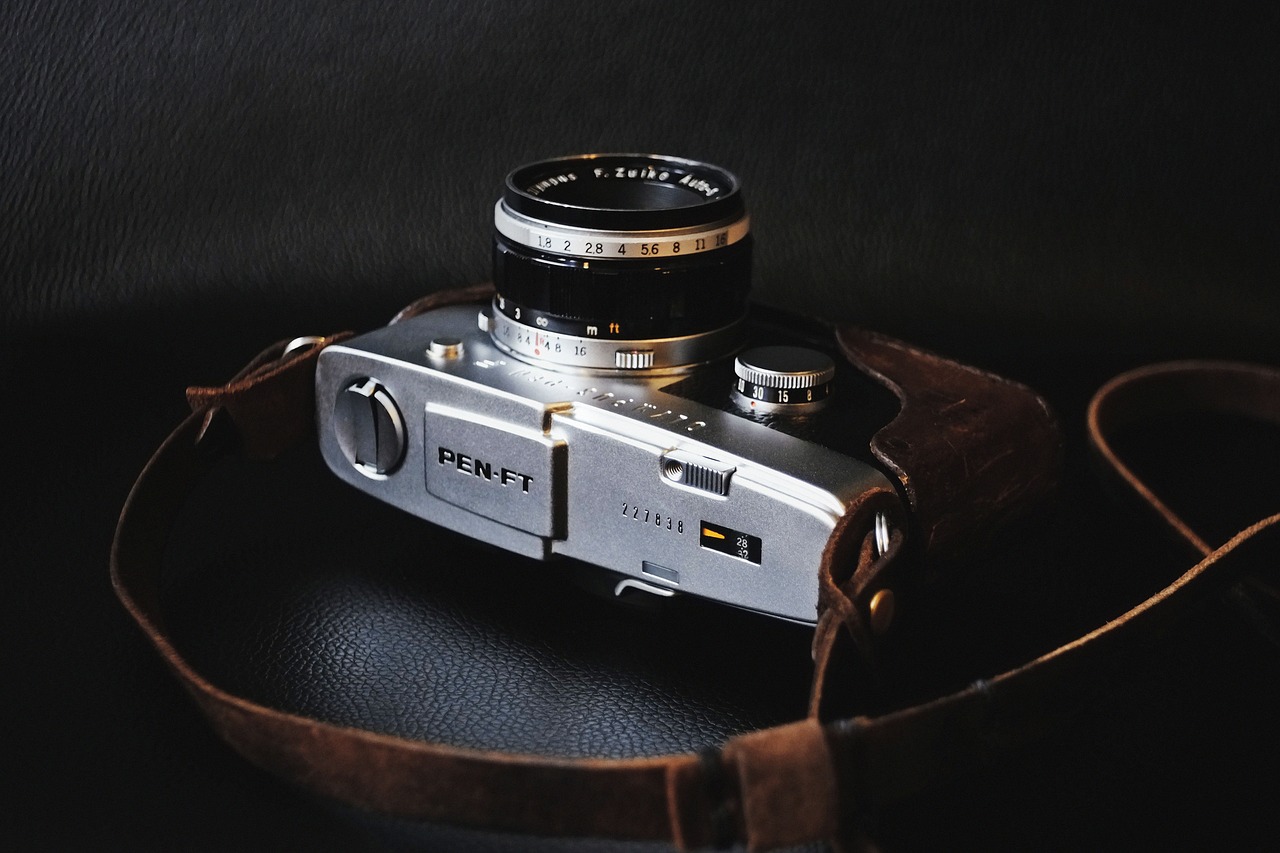
Cost Implications
This article explores the innovative technology of quantum radar, its benefits, challenges, and potential applications in modern defense systems, highlighting how it could revolutionize detection and surveillance.
Quantum radar utilizes the principles of quantum mechanics to enhance detection capabilities, offering improved sensitivity and accuracy compared to traditional radar systems, making it a game-changer in defense technology.
Understanding the mechanics behind quantum radar is crucial. It employs quantum entanglement and superposition to detect objects with minimal interference, allowing for unprecedented performance in challenging environments.
At its core, quantum radar relies on fundamental principles of quantum mechanics, such as entanglement and wave-particle duality, which enable it to surpass classical limitations in detection technology.
Entanglement allows quantum radar to correlate information between particles, enhancing its ability to detect stealthy objects that traditional radar might miss, thus improving situational awareness in defense scenarios.
Superposition enables quantum radar to analyze multiple states simultaneously, drastically increasing the probability of detecting targets and reducing false alarms, which is crucial for military operations.
Quantum radar offers several advantages, including greater range, improved resolution, and the ability to detect low-observable targets, positioning it as a superior alternative to conventional radar systems.
Despite its potential, quantum radar faces significant challenges, including technological limitations, high costs, and the need for specialized training, which may hinder widespread adoption in defense applications.
Current technological constraints in producing and maintaining quantum systems pose hurdles for the practical implementation of quantum radar, necessitating further research and development to overcome these obstacles.
The high costs associated with developing and deploying quantum radar systems can be a barrier to entry for many defense organizations. The investment required for research, development, and eventual implementation is significant, often leading to difficult budgetary decisions. For instance, the cost of quantum radar technology may include:
- Research and Development Costs: Developing quantum radar systems involves extensive research, which can consume substantial financial resources.
- Equipment and Infrastructure: The need for specialized equipment and infrastructure to support quantum technology can further inflate costs.
- Training and Expertise: Implementing quantum radar requires personnel with specialized skills, necessitating investment in training and education programs.
Moreover, the long-term maintenance and operational costs can also be daunting. Defense organizations must weigh these financial implications against the potential benefits of enhanced detection capabilities. This leads to a critical question: is the investment in quantum radar worth the potential advantages it offers? As military budgets are often tight, decision-makers must carefully evaluate the trade-offs involved.
Quantum radar's unique capabilities open up various applications in defense, from tracking stealth aircraft to monitoring missile launches, significantly enhancing national security measures and operational effectiveness.
One of the most promising applications of quantum radar is its ability to detect stealth technology, providing military forces with a crucial advantage in identifying and tracking enemy assets.
In missile defense, quantum radar can improve early warning systems by accurately detecting incoming threats, allowing for faster response times and more effective interception strategies.
- What is quantum radar? Quantum radar is a detection system that uses quantum mechanics to enhance sensitivity and accuracy in detecting objects.
- How does quantum radar work? It works by employing principles like entanglement and superposition to detect objects with minimal interference.
- What are the advantages of quantum radar? Advantages include greater range, improved resolution, and the ability to detect low-observable targets.
- What are the challenges of implementing quantum radar? Challenges include high costs, technological limitations, and the need for specialized training.
- What are the potential applications in defense? Applications include stealth detection and missile defense systems.
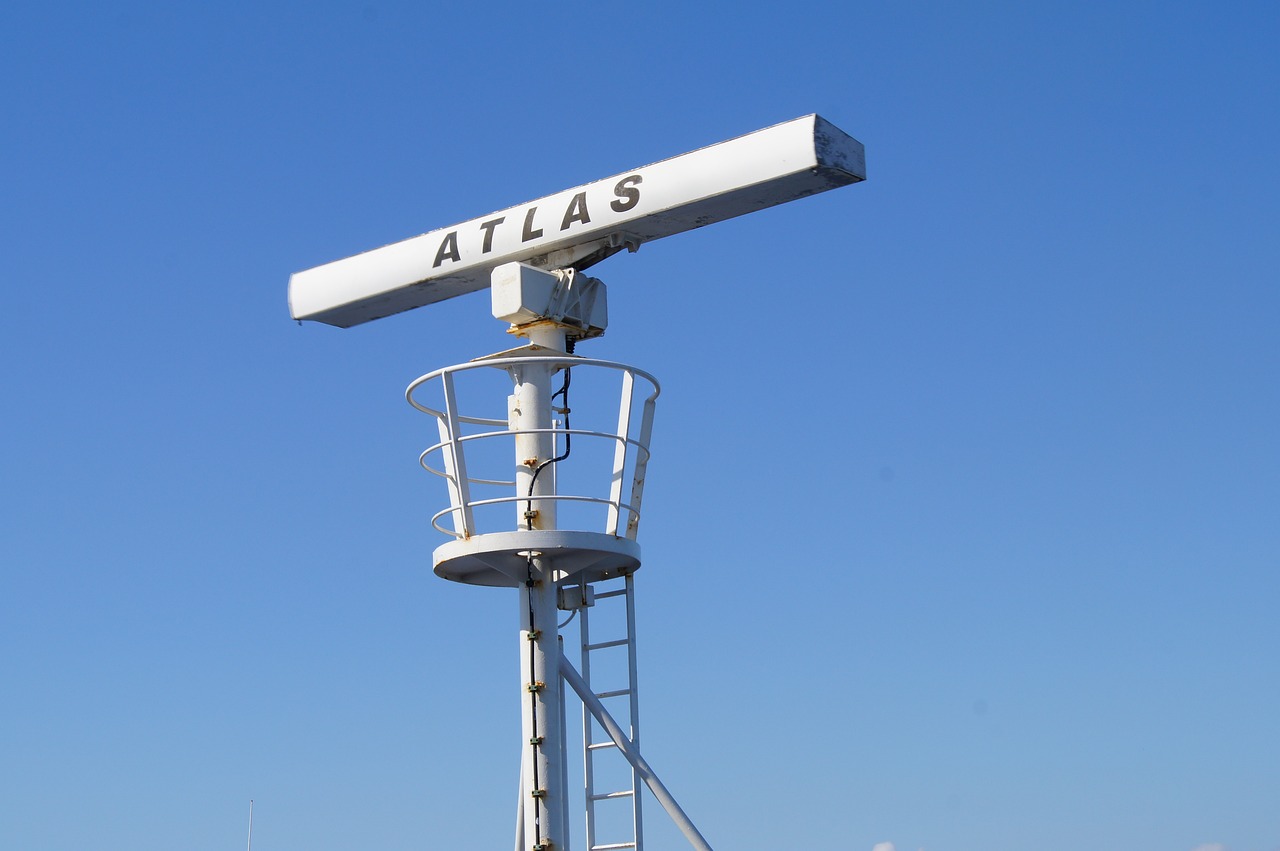
Potential Applications in Defense
Quantum radar's unique capabilities open up a myriad of applications in the defense sector, fundamentally altering how military forces approach surveillance and threat detection. Imagine having a tool that not only enhances visibility but also enables detection in scenarios that were previously deemed impossible. This is precisely what quantum radar offers, and its potential applications are both exciting and critical for modern defense strategies.
One of the most promising applications of quantum radar is its ability to detect stealth technology. Stealth aircraft and other low-observable targets are designed to evade traditional radar systems, making them a significant challenge for military operations. However, with quantum radar, the game changes dramatically. By leveraging quantum entanglement, this technology can identify and track these elusive assets, providing military forces with a crucial advantage in situational awareness. It’s like having a superhero's x-ray vision that pierces through the veil of invisibility!
Another vital application lies in missile defense systems. In an era where missile threats are becoming more sophisticated, the need for early warning systems has never been greater. Quantum radar can enhance these systems by accurately detecting incoming threats, allowing for faster response times and more effective interception strategies. This capability not only improves national security measures but also significantly boosts operational effectiveness during critical missions. Imagine a world where military personnel can react to threats in real time, minimizing risks and maximizing safety.
Additionally, quantum radar can be instrumental in surveillance operations. Its unparalleled accuracy and sensitivity make it an ideal tool for monitoring borders and critical infrastructures. By detecting unauthorized movements or potential incursions with high precision, defense forces can act swiftly to mitigate risks. This application is particularly relevant in today’s geopolitical climate, where tensions can escalate rapidly, and timely intelligence can make all the difference.
Moreover, the integration of quantum radar into unmanned aerial vehicles (UAVs) could revolutionize reconnaissance missions. Equipped with quantum radar, UAVs could gather intelligence in hostile environments without being detected, providing a significant tactical advantage. This stealthy approach enables military forces to conduct operations with a degree of safety and effectiveness that was previously unattainable.
In summary, the potential applications of quantum radar in defense are vast and varied. From stealth detection to missile defense and surveillance operations, this technology is poised to redefine how military forces operate in the field. As we look to the future, it is clear that quantum radar will play a pivotal role in enhancing national security and ensuring operational readiness in an increasingly complex world.
- What is quantum radar? Quantum radar is a detection system that utilizes principles of quantum mechanics to improve sensitivity and accuracy compared to traditional radar systems.
- How does quantum radar detect stealth technology? It employs quantum entanglement to correlate information between particles, enhancing its ability to detect low-observable targets that traditional radar might miss.
- What are the advantages of quantum radar over traditional radar? Quantum radar offers greater range, improved resolution, and the ability to detect stealthy objects, making it a superior alternative to conventional radar systems.
- What challenges does quantum radar face? Significant challenges include technological limitations, high costs, and the need for specialized training, which could hinder widespread adoption.
- What are some potential applications of quantum radar in defense? Potential applications include stealth detection, missile defense systems, surveillance operations, and integration with unmanned aerial vehicles (UAVs).
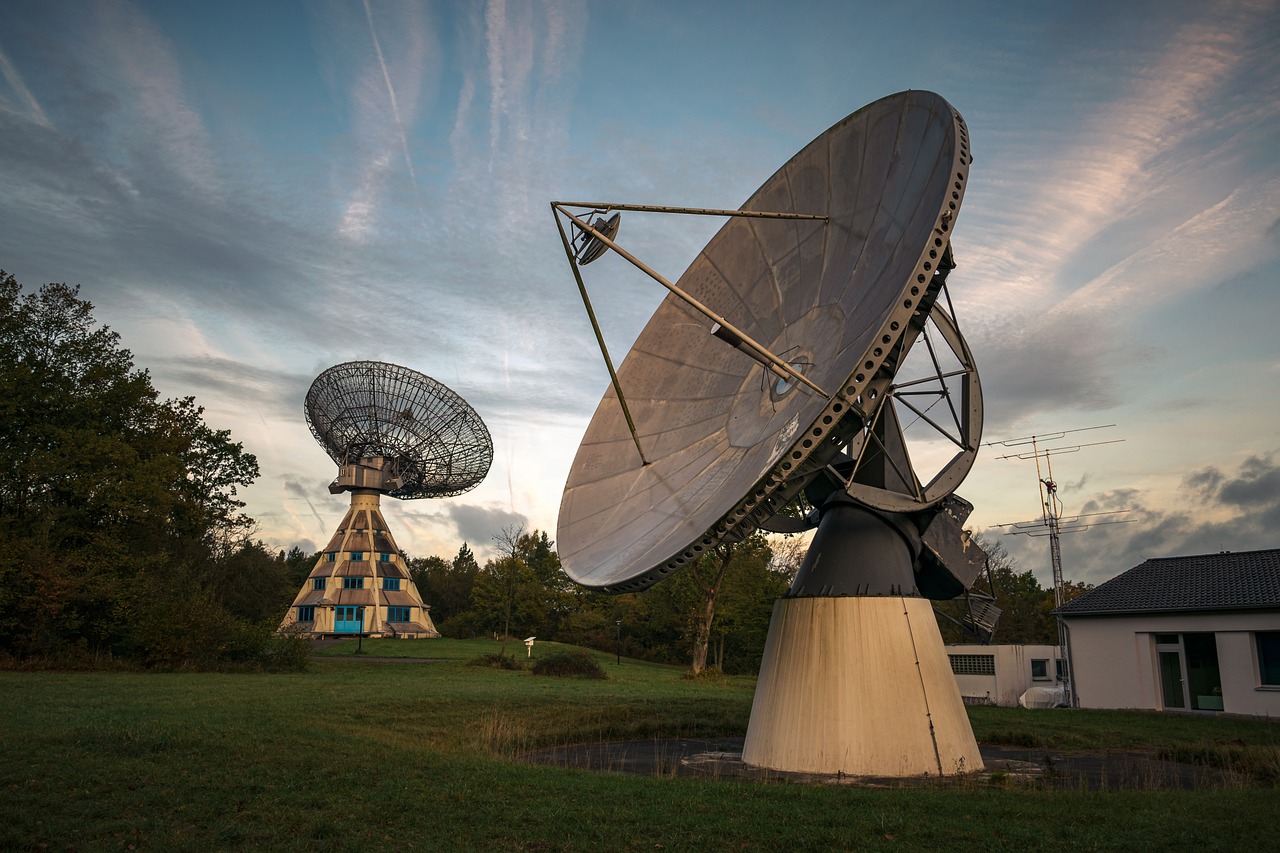
Stealth Detection
In the realm of modern warfare, the ability to detect stealth technology is akin to finding a needle in a haystack. Traditional radar systems have struggled to identify stealthy aircraft and other low-observable assets that utilize advanced materials and designs to minimize their radar cross-section. This is where quantum radar steps in, revolutionizing the detection landscape. By leveraging the peculiarities of quantum mechanics, quantum radar can detect these elusive objects with remarkable precision.
Quantum radar operates on the principle of quantum entanglement, which allows it to correlate information between particles in a way that classical systems cannot. This capability significantly enhances its ability to discern stealthy targets, providing military forces with a critical edge. For instance, while a conventional radar might struggle to pick up the faint signals from a stealth aircraft, a quantum radar can exploit the entangled particles to boost the signal's detectability, thereby revealing the presence of the aircraft.
Moreover, the superposition principle enables quantum radar to analyze multiple states at once. This means that it can simultaneously assess various potential target locations and characteristics, increasing the likelihood of detection while minimizing false alarms. In military operations, where every second counts, this capability can be the difference between success and failure.
To illustrate the advantages of quantum radar in stealth detection, consider the following table:
| Feature | Traditional Radar | Quantum Radar |
|---|---|---|
| Detection of Stealth Targets | Limited | High |
| False Alarm Rate | Moderate | Low |
| Operational Range | Limited | Extended |
| Signal Processing | Single State | Multiple States |
As military strategies evolve, the integration of quantum radar into defense systems promises to enhance situational awareness dramatically. The ability to detect stealth technology not only strengthens national security but also ensures that military operations can be conducted with greater confidence and effectiveness. This technological leap could reshape the future of aerial combat, making it essential for defense organizations to invest in and adopt quantum radar systems.
- What is quantum radar? Quantum radar is a detection system that utilizes the principles of quantum mechanics to improve sensitivity and accuracy in detecting objects, especially stealth technology.
- How does quantum radar detect stealth technology? It uses quantum entanglement and superposition to enhance signal detection capabilities, allowing it to identify low-observable targets that traditional radar may miss.
- What are the advantages of using quantum radar over traditional radar? Quantum radar offers greater range, improved resolution, and a significantly reduced false alarm rate, making it more effective in various military applications.
- What challenges does quantum radar face? The main challenges include technological limitations, high development costs, and the need for specialized training for personnel operating these systems.
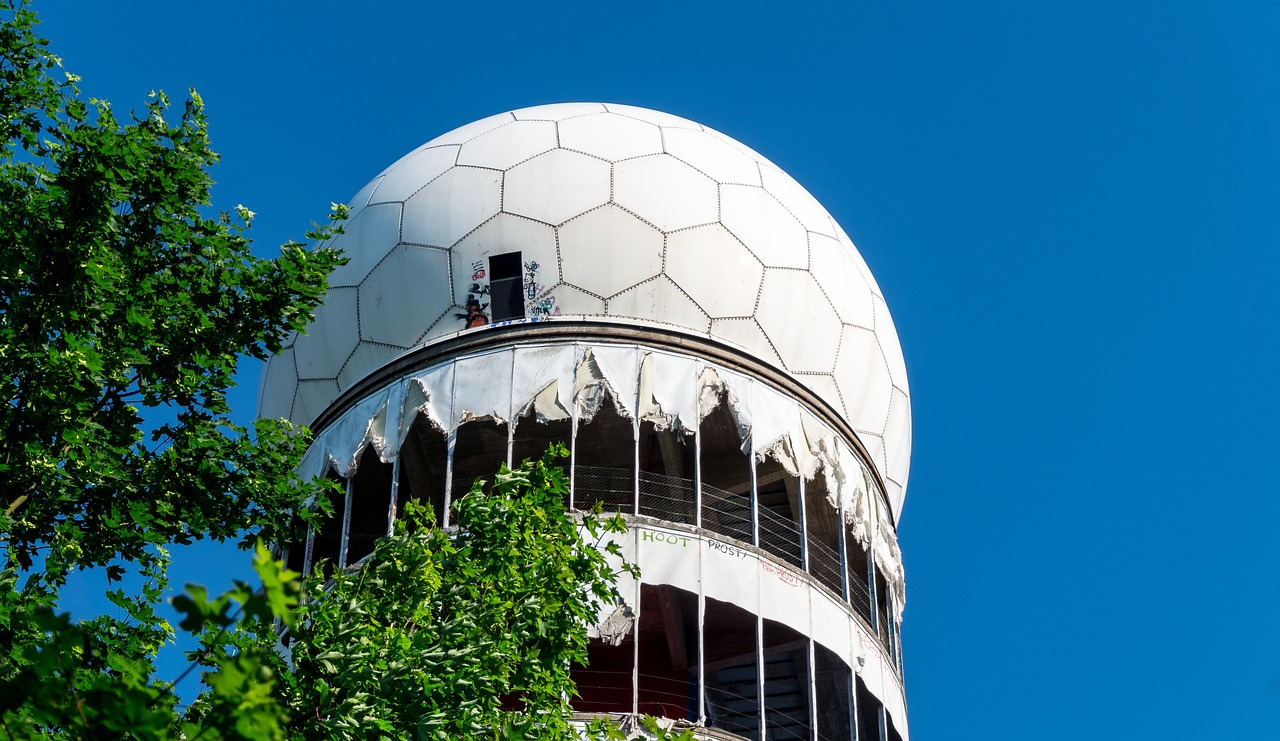
Missile Defense Systems
In the ever-evolving landscape of modern warfare, the need for effective missile defense systems has never been more critical. As nations develop increasingly sophisticated missile technologies, the ability to detect and intercept these threats promptly is paramount. This is where quantum radar comes into play, offering a revolutionary approach to missile defense that could significantly enhance national security. By leveraging the unique properties of quantum mechanics, quantum radar systems can detect incoming missiles with unparalleled accuracy and speed, providing a crucial edge in defense operations.
One of the most remarkable features of quantum radar is its ability to operate effectively in challenging environments. Traditional radar systems often struggle with detecting low-observable or stealth missiles, which are designed to evade detection. However, quantum radar's reliance on quantum entanglement allows it to correlate information from multiple sources, thus improving the chances of identifying these elusive threats. Imagine a scenario where a stealth missile is launched; traditional systems may miss it, but quantum radar could pick up its signature, alerting defense forces in real-time.
Moreover, the speed at which quantum radar can process information is a game-changer. In missile defense, every second counts. Quantum radar can provide early warning signals, allowing military forces to react swiftly and implement interception strategies. This capability is crucial during high-stakes situations, where a rapid response can mean the difference between success and failure. For instance, if a hostile missile is detected, the system can immediately relay the information to command centers, enabling them to deploy countermeasures without delay.
To illustrate the impact of quantum radar on missile defense systems, consider the following table that outlines the key differences between traditional radar and quantum radar:
| Feature | Traditional Radar | Quantum Radar |
|---|---|---|
| Detection Range | Limited | Extended |
| Stealth Detection | Challenging | Highly Effective |
| Processing Speed | Moderate | Rapid |
| False Alarm Rate | Higher | Lower |
As we delve deeper into the potential of quantum radar in missile defense, it's essential to recognize that this technology is still in its infancy. While the benefits are clear, there are also challenges to overcome, such as the high costs of development and the need for specialized training for personnel. However, the investment in quantum radar could yield significant returns in terms of enhanced national security and operational effectiveness.
In conclusion, quantum radar represents a significant leap forward in missile defense systems. Its ability to detect stealth missiles, process information rapidly, and provide early warnings positions it as a vital tool in modern military arsenals. As research and development continue, we can expect to see more nations adopting this cutting-edge technology, ultimately reshaping the future of defense strategies worldwide.
- What is quantum radar? Quantum radar is a detection technology that uses the principles of quantum mechanics to enhance sensitivity and accuracy compared to traditional radar systems.
- How does quantum radar improve missile defense? It offers superior detection capabilities for stealth missiles, enabling faster response times and more effective interception strategies.
- What are the main challenges in implementing quantum radar? The challenges include high development costs, technological limitations, and the need for specialized training for military personnel.
- Can quantum radar detect all types of missiles? While it excels at detecting stealth technology, ongoing research is necessary to enhance its capabilities across various missile types.
Frequently Asked Questions
- What is quantum radar and how does it differ from traditional radar?
Quantum radar is a cutting-edge technology that uses the principles of quantum mechanics to enhance detection capabilities. Unlike traditional radar, which relies on radio waves, quantum radar utilizes quantum entanglement and superposition to achieve improved sensitivity and accuracy. This allows it to detect objects that might evade conventional radar systems, making it a game-changer in defense technology.
- How does quantum entanglement improve radar detection?
Quantum entanglement enables particles to be correlated in such a way that the state of one particle instantly influences the state of another, regardless of distance. This unique property enhances the radar's ability to detect stealthy objects, which traditional systems often struggle to identify. By leveraging entanglement, quantum radar can significantly improve situational awareness in defense scenarios.
- What are the main advantages of using quantum radar in defense?
The advantages of quantum radar include greater detection range, improved resolution, and the capability to identify low-observable targets. These features position quantum radar as a superior alternative to conventional systems, making it an essential tool for modern defense operations.
- What challenges does quantum radar face in implementation?
Despite its promising capabilities, quantum radar encounters several challenges, such as technological limitations in producing and maintaining quantum systems, high development costs, and the necessity for specialized training. These factors can hinder its widespread adoption in defense applications.
- What potential applications does quantum radar have in military operations?
Quantum radar has various potential applications in defense, including stealth detection and missile defense systems. Its ability to track stealth aircraft provides military forces with a crucial advantage, while its improved early warning capabilities can enhance missile interception strategies, significantly bolstering national security.



















